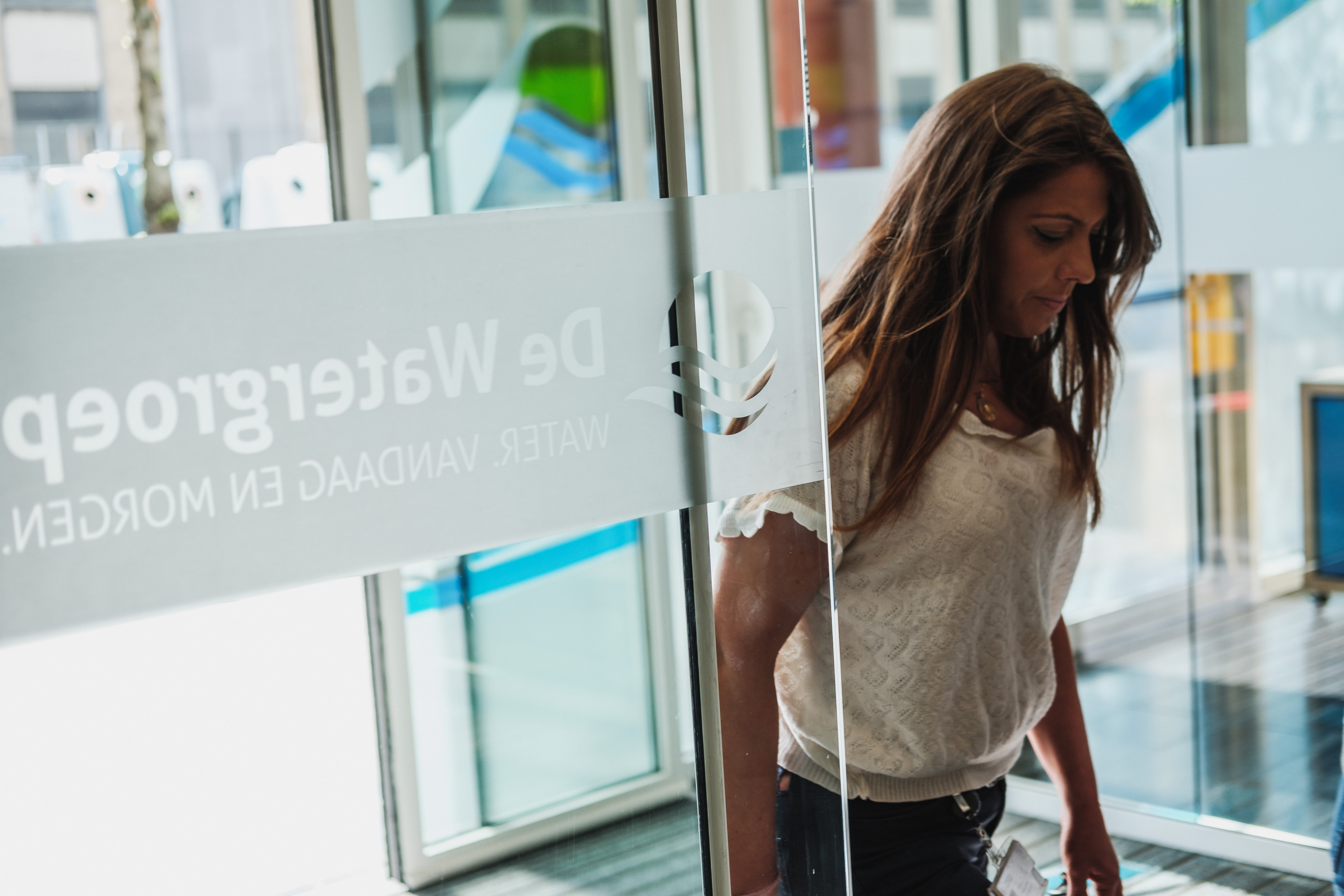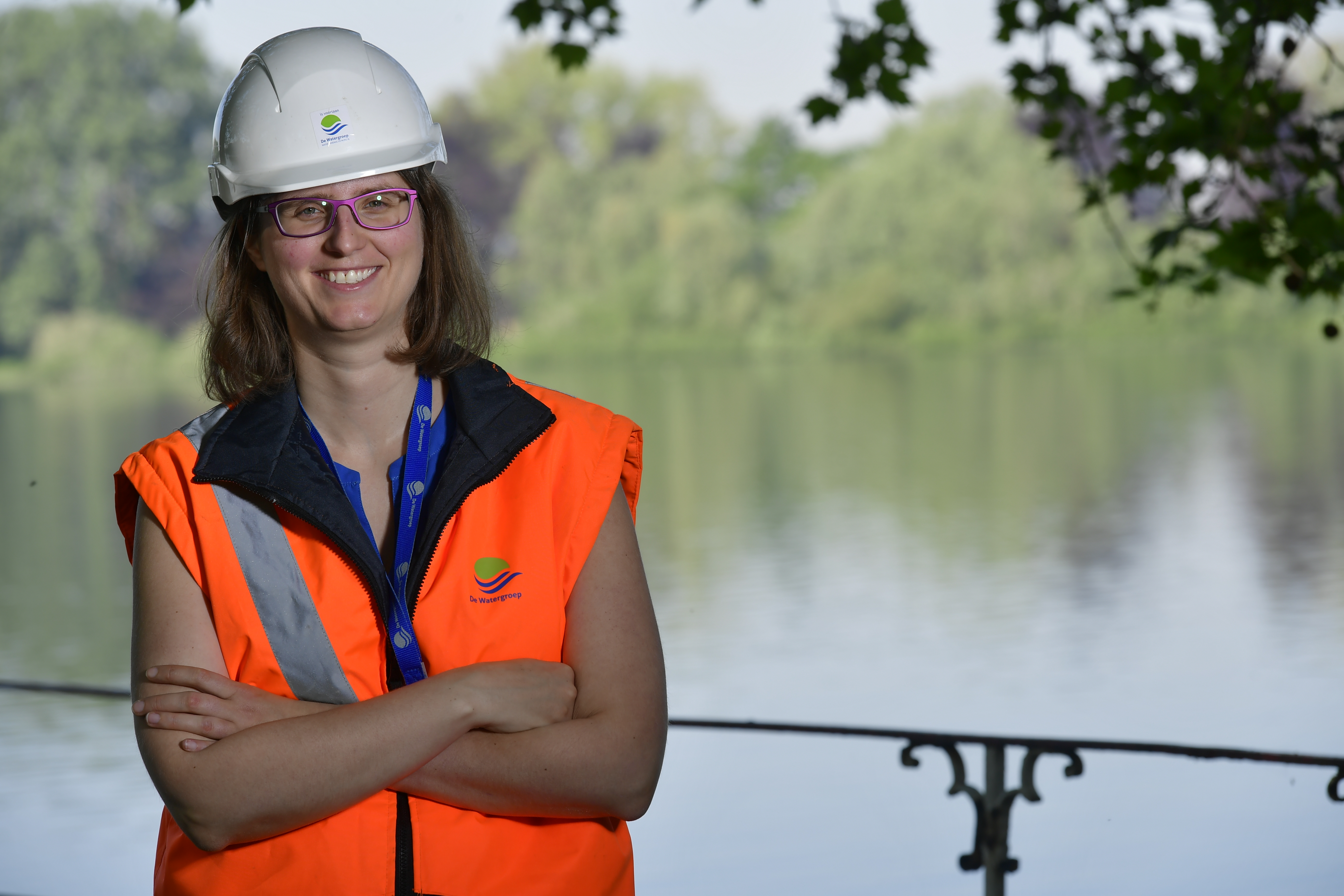Investing in people
Investing in people
Without our employees, we cannot deliver quality drinking water. That is why it is important that we take care of them. And this is how we shall do it.

More training hours in 2019
In 2019, De Watergroep concluded its Meander reorganisation project. This achievement required a lot of internal shifts, new recruitment and countless hours of training, both traditional and digital.
The Meander year that was 2019 also resulted in some remarkable observations and figures.

E-learning: learning whenever it suits
E-learning enables employees to make their way through training at their own pace. De Watergroep introduced e-learning modules as part of its Meander reorganisation project.
ACCESSIBLE
E-learning is a great tool to share information or knowledge with a large group of employees. Participants on the modules do not need to travel anywhere and can work through the training material at their own pace. “We had already explored the principle of e-learning on multiple occasions in the past, but the first few systems were expensive and the training platforms were inefficient”, HR, Training and Development team manager Dries Moons explains. “In the meantime, lots of suppliers have started offering the option for employers to design their own e-learning courses. Our HR tool Vesta Pro also provides the perfect location to make the e-learning modules accessible to our employees.
FUTURE ORIENTED
The first e-learning modules were introduced as part of Meander, De Watergroep’s major reorganisation project. As a result of this reorganisation, a large number of employees saw their tasks change in 2019. “As part of Meander, the e-learning modules offered additional information on top of the many traditional training sessions”, according to Dries Moons. “Using Vesta Pro, we recorded which employees had taken which e-learning modules, albeit without completing a test. We intend to continue our commitment to e-learning even after Meander. Especially for training that is relevant to large numbers of employees, such as safety instructions or integrity guidelines, e-learning is absolutely worth the time and investment. In time, we also intend to introduce online testing to complete the training process.”
European Junior Water Programme kicks off
Ingrid Keupers, a hydrologist at our Water Sources and Environment division, will be De Watergroep’s ambassador on the European Junior Water Programme, a two-year training programme that started in Brussels in 2019.

TALENT IN THE EUROPEAN WATER SECTOR
The European Junior Water Programme offers young talent in the European water sector a unique opportunity to gain extra knowledge and develop a network. The first edition kicked off in 2019 with a great mix of nationalities and sectors: participants hailed from the Netherlands, Belgium, France, Italy, Wales, Norway, Romania and Slovakia, with backgrounds in drinking water production, waste water, waterway management and quality monitoring.
PERSONAL SKILLS
“As all participants come from a different background and bring their own perspective, there is a lot we can learn from each other”, Ingrid Keupers believes. “During our first meeting in Brussels, we explored the aspect of networking, among other things, and we participated as a group in the #WIE2019 (Water Innovation Europe) congress, which had ‘Water meets energy’ as its theme. Through panel discussions, we covered a range of technological and policy challenges in relation to water and energy.” The participants in the European Junior Water Programme are meeting four times a year in 2019 and 2020 for intensive training.